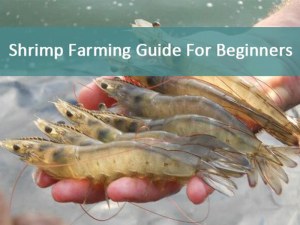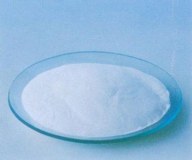Shrimp is a common food on the table. There are many varieties of shrimp. Each type of shrimp has its own characteristics. The freshwater shrimp and sea shrimp are rich in nutrients and taste slightly different. Nowadays, the scale and quantity of farmed shrimps are rising, and the technology of raising shrimps is also very mature. However, for some beginners, there is still much knowledge to learn. Next, let's analyze the shrimp farming methods and tricks!
Machines For Making Shrimp Feed
Through the fish feed extruder we can use cheap local raw materials to produce high-quality aquatic feed pellets, which may save feed costs.
What is the basic knowledge of shrimp farming?
- Identify the quality of the water
It directly affects the healthy growth and development of shrimp. During the breeding process, the pH of the pond water is maintained between 7.5 and 8.5, and the transparency is 30cm to 40cm. New water should be added frequently, the lime solution should be poured regularly to adjust the water quality to prevent disease, shelling, and so on.
- Feed must be fed properly
Shrimp will kill each other in the case of hunger and lack of food, so the amount of feeding must be sufficient. The lobster feed is animal and plant feed. The plant feed is wheat, water grass, rapeseed cake, etc., and the animal feed is miscellaneous fish, miscellaneous meat, and internal organs. The feeding time, feeding amount, and feeding method are determined according to the habit of the lobster crouching and the density of the shrimp in the pool. Otherwise, it will increase the feed and reduce breeding efficiency.
- Promote scientific fishing
In the shrimp breeding process, the juvenile shrimp can grow to the commodity specifications in 60 days to 90 days when the temperature is suitable and the feed is sufficient. Catching big and staying small, round the wheel. It is possible to increase the rate of return and sell good prices to achieve high production and high efficiency.
Shrimp Seed Purchase And Seedling Method
- Quality identification of shrimp seedlings
The quality of shrimp seedlings is the key to determining the success or failure of shrimp farming. The easiest and most direct way to determine whether a shrimp is healthy is to fish for shrimps of different water layers to see if there are individuals with abnormalities, death, or lack of vitality. If this phenomenon occurs, it indicates that the shrimp seedlings in the pond have been diseased or ill. If such shrimps are purchased, the breeding may be completely failed, and the survival rate is greatly affected.
- Shrimp seed purchase
Desalination: The salinity of the nursery is about 28‰, and the salinity of the shrimp pond on the farm is often lower than the salinity of the nursery. Therefore, the shrimp must be desalinated. The salinity of the pond is not lower than that of the nursery. In the process of desalination, it should be carried out gradually, and the salinity reduced every day should not exceed 1‰.
Counting: In order to ensure the number of shrimps, the purchase of shrimps should not be estimated, and should be counted one by one. When counting, a certain proportion of counts can be taken. For example, by estimating the number of shrimps, farmers often suffer large losses.
Transportation: When purchasing seedlings, buy as close as possible, and buy as much as possible from reputable units or individuals. Because of the recent purchase, it provides convenience for transportation and greatly reduces the risk of transportation.
Seedling density: Different culture objects have different seedling density. Taking the cultured prawn as an example, in the case of an aerator, it is appropriate to put 800-10000 tails per 1 mu of water.
Seedling time: Different cultured species, the time of seedling release is also different. Take the prawns as an example. When the seedlings are placed, the water temperature should be stable above 24 °C.
Seedling method: After the shrimps are transported to the shrimp pond, the bag should be immersed in water for 30 minutes to make the water temperature in the bag close to the pond. When releasing the seedlings, let the water slowly flow into the bag, and then slowly lift the bottom of the bag to allow the shrimp to swim slowly.
Shrimp Water Quality Problem
After 5 days of seedlings, start adding water to the shrimp pond. Add water once every 2 days, add 5 cm of water each time, until the shrimp pond reaches the water storage depth. The hot water in summer should be filled up. 1 day to 2 days before the rainstorm, the water is added to the upper limit of the water storage in the shrimp pond, so that the rainwater that falls naturally through the upper edge of the gate, preventing the rainwater from salting the shrimp pond, and the pH value is greatly reduced, affecting the growth of the shrimp or causing the dead shrimp.
Hope this article can help you know more shrimp farming, if you want to build your own < u>shrimp fish feed plant, please contact us.
Location : No.45 Agricultural Road, Jinshui District, Zhengzhou, Henan China, 450003 Zhengzhou,
Contact : Yan Amy, +8615838279423








